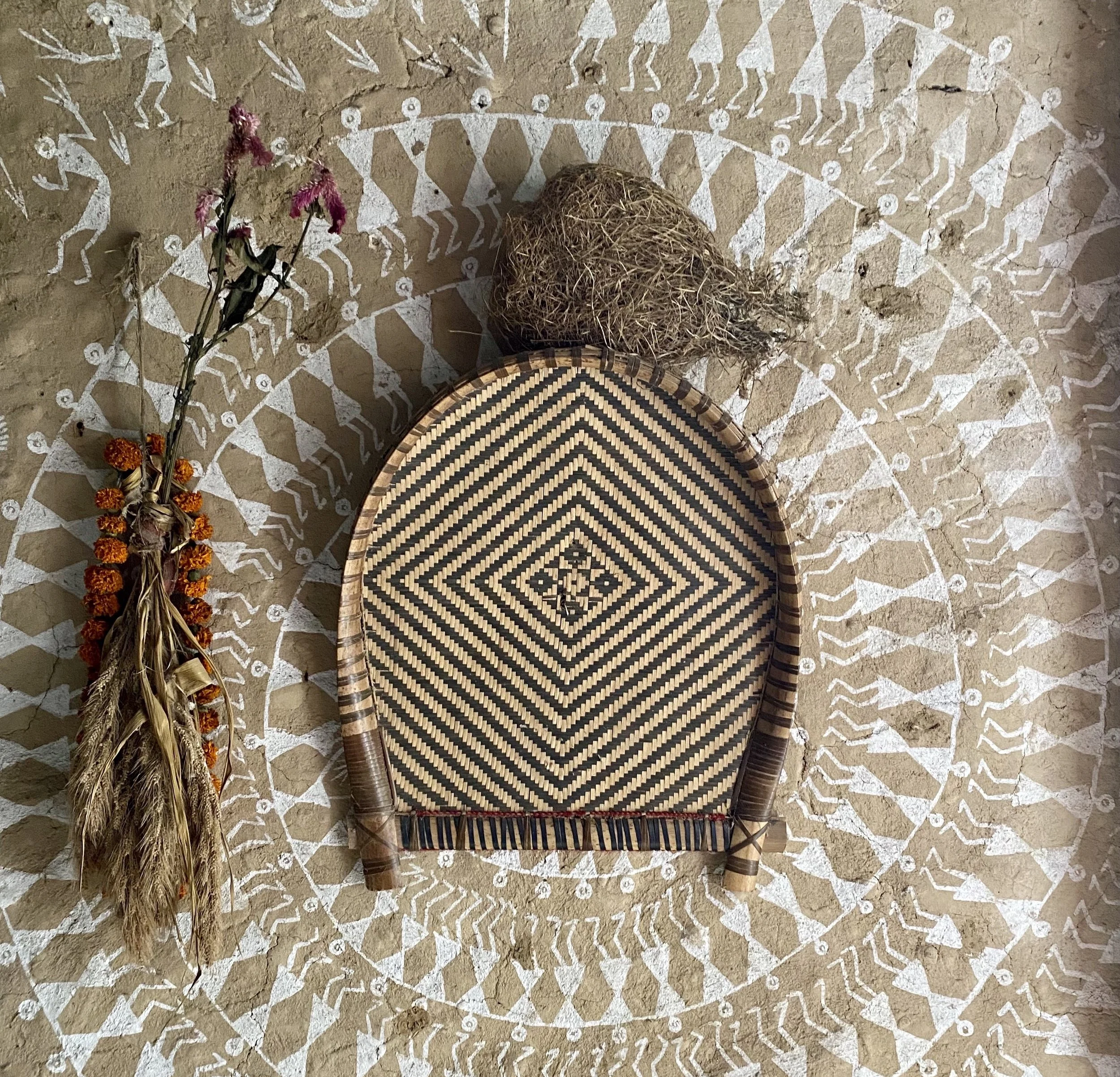The Seed Bank
The heart of the farm is the seed bank.
70% of the farmland here is used for seed conservation, while the remaining 30% is kitchen garden space and experimental plots (used to gather information to provide to farmers in their network about what varieties of crops or growing methods work best in this region).
The farm is both an experimental farm and biodiversity conservation center. They teach farmers organic and biodiverse farming practices as well as provide the most relevant and up-to-date information on organic farming methods and seed saving. It’s very different than other farms I’ve been on in the U.S. because so much of what is grown is intentionally allowed to go to seed – carrot greens are two feet high and flowering, mustard green flowers touch your shoulder when you walk by as well as daikon radish flowers are drooping in to the neighboring pathways. It’s really beautiful.
Navdanya works with farmers in 22 states across India and has trained 2.2 million women farmers to date – which is a large number, yet only encompasses 7-8% of all farmers in India.
They have 147 seed banks across India – each containing experimental gardens as well to demonstrate to farmers in that local region the potential that biodiverse farming provides. The seed bank at the farm here is the largest with as much as 750 varieties of rice and more than 200 varieties of wheat and other seeds documented.
Seed saving is what it sounds like – saving seeds from crops grown to plant them for the next season, usually choosing those that grow the best or have the best fruit or flavor. However, it is not saving seeds to accumulate large quantities in a cellar. Plants pass their wisdom down into their seeds, so seeds hold the knowledge needed to grow in the specific region they are. Saving seeds and planting them season after season allows for plants to continue to evolve with nature and adapt to the region in which they grow – provider greater resilience and ability to adapt in changing climates. It allows for greater resiliency of a farm, and greater resiliency for a farmer to feed themselves, their family, and/or their community.
Farmers have been saving seeds across the world for thousands of years – it is one of the most traditional farming practices. However, today, it has become somewhat of a novelty and a revolutionary act. Thanks to the monstrosity known as Monsanto, and other corporations seeking to monopolize the seed (and thus the food system), it is currently illegal in the U.S. for farmers that choose to grow GMO varieties of seeds to save them – with patents on GMO seeds, they are legally bound to purchase seed year after year and can be heavily prosecuted for saving their own seeds.
At Navdanya, seeds are saved each season and provided to farmers the following season so that the knowledge contained within the seeds can be put to use. These farmers can then save the seeds for themselves and continue the process. They are also encouraged to give seeds for free to two others farmers who are willing to distribute seeds in the same way. They also distribute seeds to farmers in need or those who have lost crops due to natural disaster or challenges due to the changing climate and need climate-resilient seed varieties.
There have been many episodes of sweeping farmer suicides across India, particularly since the Green Revolution. Farmers that adopted modern industrial practices were left with piling amounts of debt and crop loss -- despite the promises of higher yields and greater profits, these farmers must invest in the costly machinery required to grow conventionally, purchase seeds year after year, and the amount of chemical inputs they need increases over time as soils of their cropland deplete more and more over time. On top of that, farmers and their families need more money to seek medical treatment for the growing health consequences they and their families suffer from the use of these harsh chemicals. They are left swimming in debt on all sides and, sadly, feel left with no other options than to end their lives.
So, seed saving is being reintroduced through various networks and organizations (both above and underground), such as Navdanya, across the world and there are many who are fighting the true fight to gain their sovereignty back and protect the rights of farmers and of the Earth.




